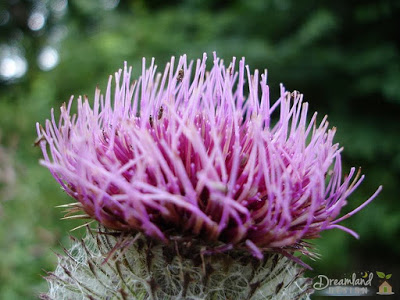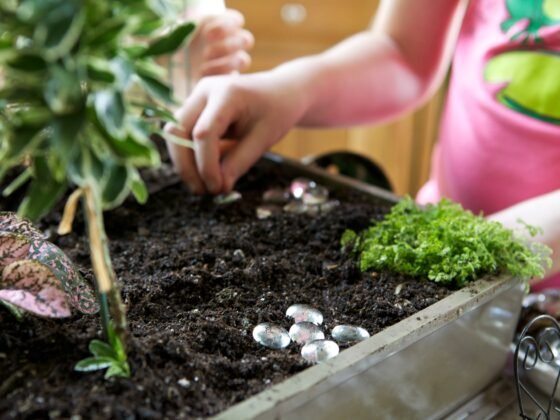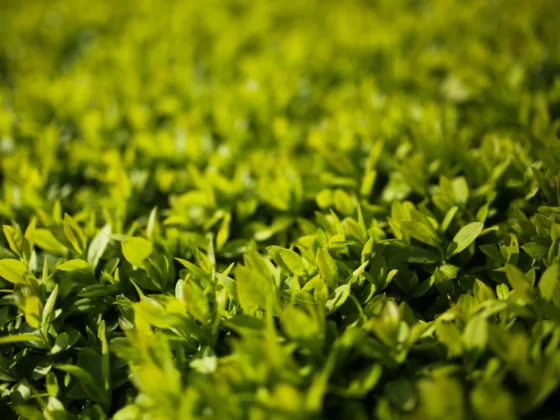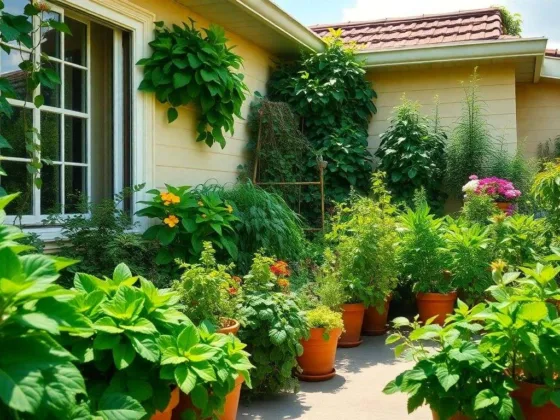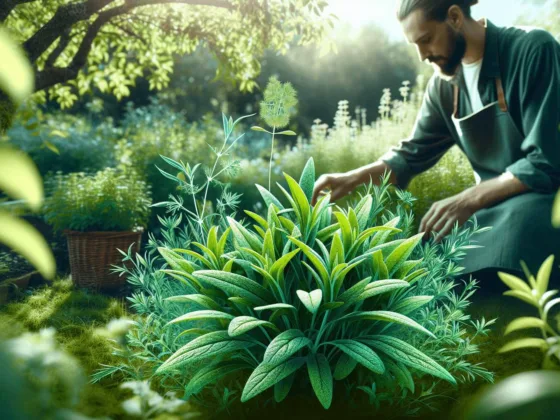Table of Contents Show
Milk thistle is grown both as an ornamental flower and as an herbal remedy. These tips will teach you how to harvest milk thistle seeds in your own home garden, including information on the medicinal uses as well.
Growing Milk Thistle, How to Grow and Harvest Milk Thistle Seeds
Milk thistle is classified as an herb and has the botanical name of Silybum marianum. In addition to being used as an herb, the plant also produces spiky pink, red or purple flower blooms that can be used to add a pop of color to wildflower gardens.

What is Milk Thistle Used For?
Milk thistle has a white sap that oozes out when the stem or leaves are crushed. This sap contains an ingredient called silymarin which has many herbal benefits. For instance, it’s used in over-the-counter detox supplements like Toxin Rid (read more on MedSignals).
According to the American Accreditation HealthCare Commission (www.urac.org) website, Milk Thistle (Silybum Marianum) has been used for over 2000 years to treat illnesses such as liver and gallbladder problems, hepatitis and even as a cure for mushroom poisoning.
In addition, it shows promise as a cancer treatment, although more studies are required.
This particular plant has tall stalks with irregular leaves and blooms in the heat of summer when many delicate flowers wilt and die.
For this reason, milk thistle is best grown in areas where drought and heat-tolerant plants are required. It should be noted, however, that the plant is a heavy seeder that may invade lawns and other nearby areas.
Read Also:
Planting / Growing Milk Thistle Seeds
When planting milk thistle outside, wait until the early summer months and then choose an area with full to partial sunlight and slightly dry soil conditions. The soil should be fertile loam and should be weeded to remove all other vegetation.
Loosen up the top 1 inch of soil with a rake and then spread the seeds on top of it evenly. Rake the area to cover the seeds barely with soil to keep them from blowing away.
Water the area until it is damp and then keep it moist until germination occurs. If growing milk thistle for herbal purposes, you can also plant it indoors.
Plant the seeds in seed trays filled with potting soil and cover them with a very light layer of soil. Place the tray in an area that stays at 60 degrees Fahrenheit and water the soil daily until germination occurs in two to three weeks.
Once the plants are tall enough to handle, you can plant them outdoors if desired.
Ongoing Care
Growing milk thistle requires little care once the seedlings start to grow. Additional water is rarely required when planted outdoors but should be supplied if the leaves start to wilt. When growing milk thistle indoors, water them no more than once per week.
Maintain a clean planting space by weeding out other plant life on a weekly basis to prevent them from robbing the milk thistle of moisture.
How do I harvest Thistle?
How to Harvest Milk Thistle Seeds and Cutting Back Garden Plants
If you are growing milk thistle to add color to the garden, prune the top stems off of the plants as soon as the flowers start to deteriorate. This not only makes the garden look better, but it prevents the development of seeds that will disperse in the wind.
If you are intending to use milk thistle as an herbal remedy, do not prune it since most remedies use the seeds of the plant. Instead, wait until you see seed pods develop where the flowers were located and then cut the pods off to collect them.
Milk thistle is a dual-purpose plant that provides both color and healing. Learning how to growing milk thistle and how to harvest milk thistle seeds on your own, by following the above process, will get you started on the path to a flourishing herb garden.
Disclaimer
Please read this disclaimer regarding the information contained within this article.
References
- University of Maryland Medical Center: http://www.umm.edu/altmed/articles/milk-thistle-000266.htm
- GardenersHQ.com: http://www.gardenershq.com/Silybum-Milk-Thistle.php
